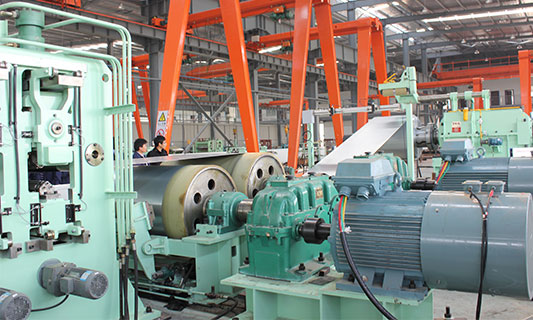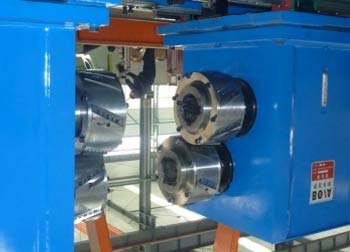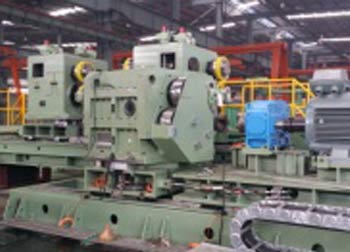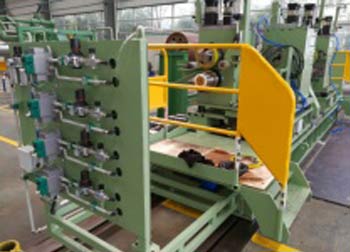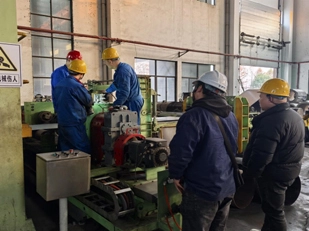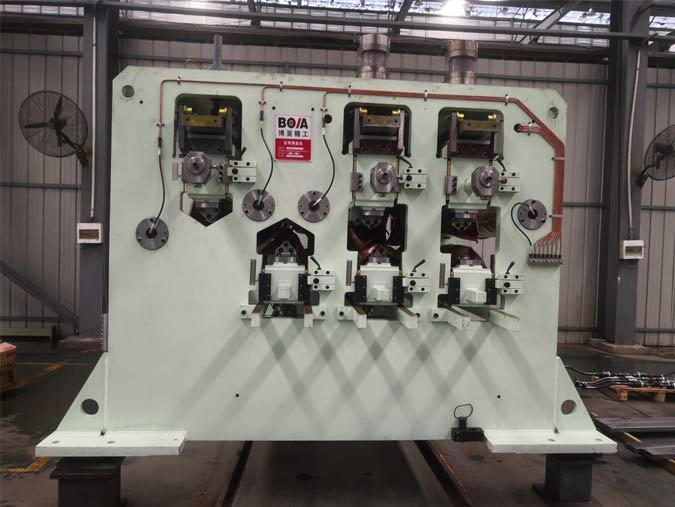Introduction of Roller Coating Machine Configuration Method
The main function of the roller coating machine is to apply a uniform and dense passivation film on the surface of the steel strip. Compared with other pure organic coatings, the solid content of the organic-inorganic composite without chromium passivation solution is relatively low. In addition, in order to obtain good comprehensive performance of the chromium-free passivation product, the thickness of the passivation film must be controlled within a certain range. If the film is too thin, the corrosion resistance is poor, and if the film is too thick, the conductivity is poor. Generally, the control range of the film thickness is 0.5-1.0μm per side, so the process parameters of the roller coating machine are highly demanding.
Due to its high efficiency, strong controllability, low operating cost, and stable quality, roller coating is currently the most important coil coating process used for coil coating. According to the number of coating rollers, it can be divided into two-roller coating machine, three-roller coating machine, four-roller coating machine, etc.; according to the running direction of the coating roller and the coil product, it can be divided into positive coating, semi-negative coating, and full-negative coating. Two-roller coating is currently the most widely used, and the most commonly used method is two-roller positive coating (also called two-roller full positive coating) and two-roller semi-negative coating.
Compared with the two-roller coating machine, the three-roller coating machine is more complex in both structure and coating operation, and there are more ways to apply the coating. Of course, the construction cost is also higher. In terms of the effect of the coating product, the surface quality of the three-roller coating machine is higher, and the range of thickness control of the coating film is also larger. However, with the development of rubber layer materials (usually polyurethane) technology applied to coating rollers, the application range and service life of rubber rollers have been greatly improved. Two-roller coating machines can cover the vast majority of the application range of three-roller coating machines, so the actual application range of three-roller coating machines is relatively small. Here, only three typical three-roller coating machine configurations are introduced.
The three-roller coating machine consists of a coating roller (rubber roller), an iron roller, and a feeder roller (rubber roller), and the requirements for the two rubber rollers are basically the same. The three-roller coating machine can be set up in two ways: inclined L-type and V-type, and the feeding method can be divided into iron roller feeding, feeder roller feeding, and top feeding.
Full-negative coating of the three-roller coating machine
Iron roller
It has the function of feeding and controls the coating thickness in conjunction with the feeder roller, and transfers the coating to the coating roller.
Coating roller
Transfers the coating from the iron roller to the product.
Feeder roller
Works with the iron roller to control the coating thickness.
Coating advantages
Among all coating methods, the surface quality is the best, but the film thickness is not easy to control. The suitable wet film control range is 20~40 μm.
Semi-negative coating of the three-roller coating machine
Iron roller
Controls the coating with the feeder roller and transfers the coating to the coating roller.
Coating roller
Transfers the coating to the product.
Feeder roller
Feeds and works with the iron roller to control the coating thickness.
Coating advantages
The surface quality is good, and the film thickness is easy to control. The suitable wet film control range is 20~40 μm.
Full-positive coating of the three-roller coating machine
Iron roller
Controls the coating with the feeder roller and transfers the coating to the coating roller.
Coating roller
Transfers the coating to the product.
Feeder roller
Feeds and works with the iron roller to control the coating thickness.
Coating advantages
Among all coating methods, the roller wear is the smallest, and the film thickness is easy to control, but the surface quality is relatively poor. The suitable wet film control range is 6~20μm.
Topics You May Be Interested in:
Roll Coating Process
Backup Rolls
Precision Blanking
Conventional Stamping
Press Blanking
Popular BOYA Flat Metal Processing Machinery
Other Articles about BOYA Flat Metal Processing Machinery

 English
English 